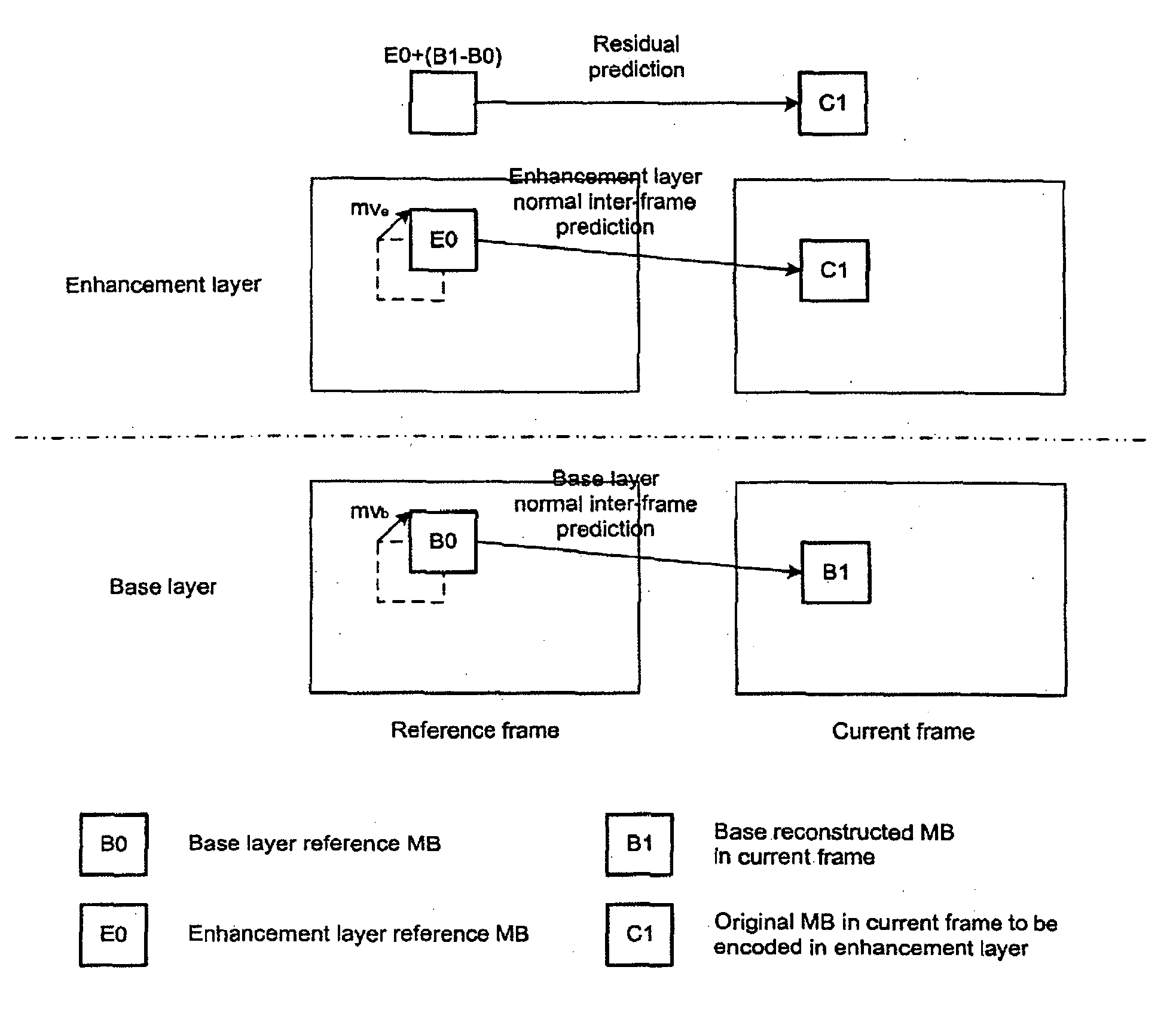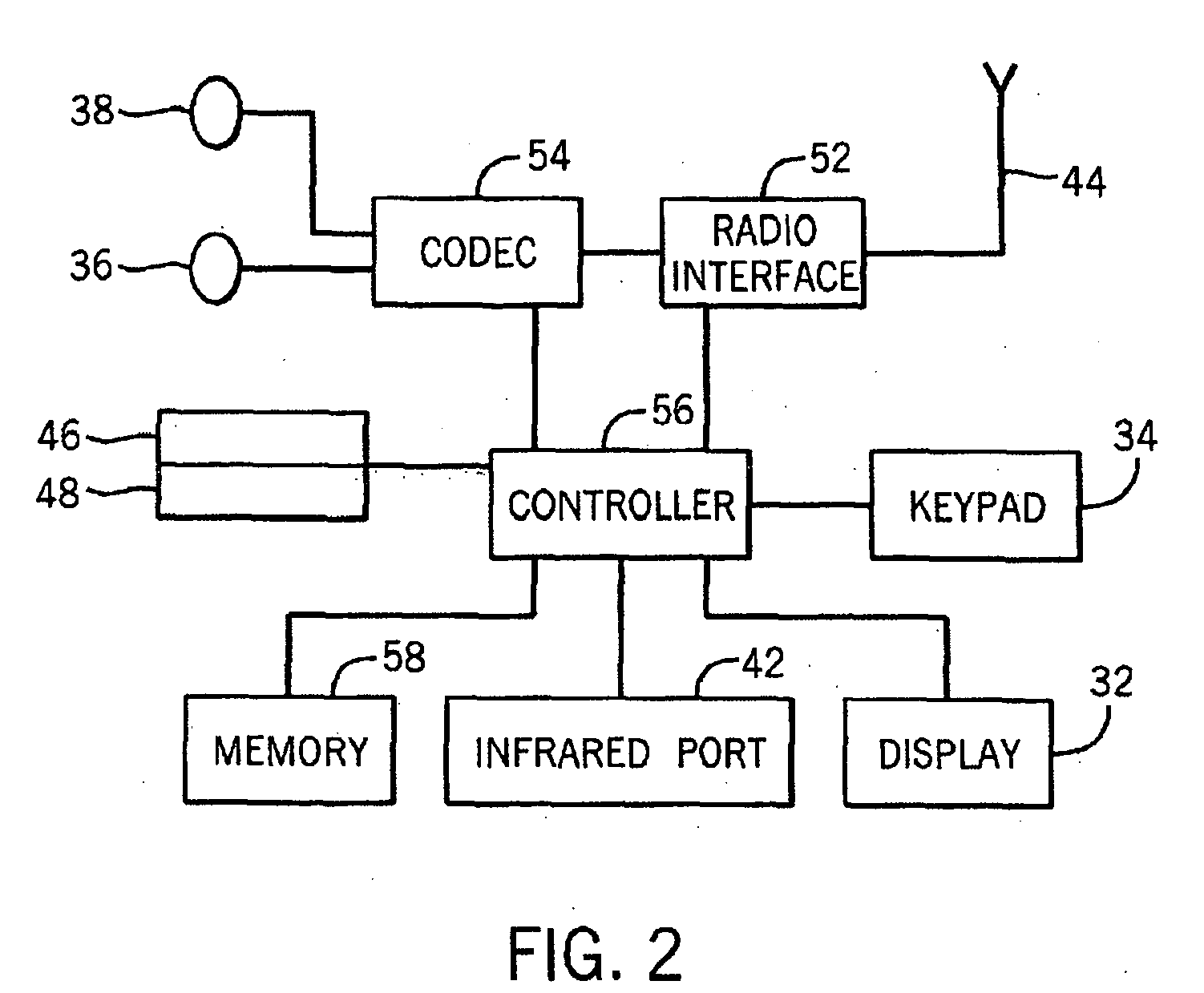Residual prediction mode in scalable video coding
a video coding and prediction mode technology, applied in the field of scalable video coding and decoding systems, can solve the problems of affecting the decodability of enhancement layers above this layer, affecting the decodability of the enhancement layer, and consuming a large amount of bits to coding the modes and associated parameters
- Summary
- Abstract
- Description
- Claims
- Application Information
AI Technical Summary
Benefits of technology
Problems solved by technology
Method used
Image
Examples
Embodiment Construction
[0035] Exemplary embodiments present methods, computer code products, and devices for efficient enhancement layer encoding and decoding. Embodiments can be used to solve some of the problems inherent to existing solutions. For example, these embodiments can be used to improve the overall coding efficiency of a scalable coding scheme.
[0036] As used herein, the term “enhancement layer” refers to a layer that is coded differentially compared to some lower quality reconstruction. The purpose of the enhancement layer is that, when added to the lower quality reconstruction, signal quality should improve, or be “enhanced.” Further, the term “base layer” applies to both a non-scalable base layer encoded using an existing video coding algorithm, and to a reconstructed enhancement layer relative to which a subsequent enhancement layer is coded.
[0037] As noted above, embodiments include program products comprising computer-readable media for carrying or having computer-executable instruction...
PUM
 Login to View More
Login to View More Abstract
Description
Claims
Application Information
 Login to View More
Login to View More - R&D
- Intellectual Property
- Life Sciences
- Materials
- Tech Scout
- Unparalleled Data Quality
- Higher Quality Content
- 60% Fewer Hallucinations
Browse by: Latest US Patents, China's latest patents, Technical Efficacy Thesaurus, Application Domain, Technology Topic, Popular Technical Reports.
© 2025 PatSnap. All rights reserved.Legal|Privacy policy|Modern Slavery Act Transparency Statement|Sitemap|About US| Contact US: help@patsnap.com



